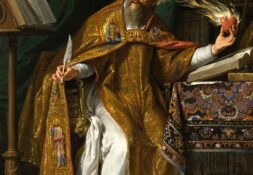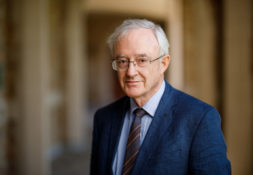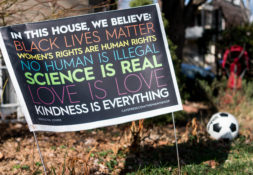The Pan-Amazon Synod and Integral Ecology
John Wesley Powell, the late 19th century explorer, geographer, ethnologist, and second director of the United States Geological Survey, keenly observed the ecological divide at approximately the 100th meridian. This demarcated the moist and green eastern United States from the arid and brown West. Aware of the implications for agriculture and settlement of the western lands opening up to expansion, Powell proposed to Congress that new territory and state borders should coincide with watershed boundaries. A watershed (or drainage basin) is that area of land upon which rain falls that is then “shed” off into a stream, river, or other body of water. For example, the University of Notre Dame lies within the St. Joseph River watershed, which covers about 4,700 square miles of land in northern Indiana and southern Michigan. However, just miles to the west of campus is the Kankakee River watershed. All the rain that falls from the sky enters streams and tributaries of the Kankakee River whose waters eventually reach the Mississippi River and the Gulf of Mexico. Watershed awareness, for Powell, would foster a wise communal care for the limited water resources integral to that place.
A watershed perspective also provides a theologically-rich vision of the identity and mission of the Christian disciple as not only an ecclesiological citizen of the Church but also an ecological citizen. Pope St. John Paul II emphasized that caring for creation—watersheds, ecosystems, species richness, etc.—is not something incidental, but rather intrinsic, to being a disciple of Jesus Christ. Humans belong to and live and work within larger ecological systems, and watersheds are natural units of those systems. Thinking with watersheds connects humans to the rest of the biological community of species that also live there and to the abiotic aspects—air, water, and rock. Pope Francis stresses the interconnectedness of all things—the human and the ecological—and a watershed offers a discrete place to observe and respond to those interconnections.
Pope Francis calls the interconnection of natural and human ecology, “integral ecology.” Human social, cultural, economic, and political life is not disconnected from but integrated with local and global ecological relationships. The social and ecological crises are not separate issues but one complex, integrated crisis. Papal social teaching of the Church first included ecological concerns in Pope Paul VI’s 1971 apostolic letter, Octogesima Adveniens, on the eightieth anniversary of Pope Leo XIII’s social teaching encyclical Rerum Novarum.
Next month, from October 6-27, the Catholic Church will hold a special synod of bishops on integral ecology, convened by Pope Francis two years ago, focused on the Church and peoples of the Amazon River watershed. This “Special Assembly for the Pan-Amazon” is the first synod of the Church to focus on a watershed or ecological region. The title of the working document for the synod is The Amazon: New Paths for the Church and for Integral Ecology.
The Amazon River watershed transcends national and diocesan boundaries. It includes portions of nine countries (Brazil, Bolivia, Colombia, Ecuador, Peru, Venezuela, Suriname, Guiana and French Guiana) and upwards of 100 Catholic dioceses. The Amazon River watershed drains 2.7 million square miles of land, and the Amazon river itself is the world’s largest, containing about 15% of the world’s flowing fresh water. The Amazon forest is also the world’s largest rainforest and one of the most diverse ecoregions of Earth with over 10% of all the world’s species. This amazing watershed provides important ecosystem services related to the local and global water cycle and uptake of carbon dioxide. Over 30 million people, including about 125 different groups of Indigenous Peoples in Voluntary Isolation (“free peoples”) live in this watershed.
Integral ecology seeks to look holistically at human activity in the watershed in relationship to the proclamation of the Gospel—resource use, conservation, agriculture, industry, migration, urbanization, corruption, historical colonialism practices, and family life. The objective of the synod, as articulated by Pope Francis is “to find new ways for the evangelization of that portion of the People of God, especially the indigenous, often forgotten and without a perspective of a good future, also for the cause of the crisis of the Amazonian forest, lung of fundamental importance for our planet.”
The Pan-Amazon Synod provides an opportunity for all people to see and think with a watershed perspective, and for Catholics and all Christians to rediscover the intimate connection between creation and redemption in God’s plan of salvation as is evident in that the Word of God through whom all creation came into being became incarnate of the Virgin Mary and offered his life on the Cross for us. To date, much of the reporting on the synod has focused on criticism, especially by several Cardinals of the Church, questioning the orthodoxy of the preparatory document and what the synod portends about fidelity to the Church and its doctrine and practice (e.g., celibate priesthood, role of women in the Church, sources of divine revelation). This issue is for a different discussion. For now, this essay focuses on an opportunity for seeing and engaging the needs of the world and humankind with a broader vision that comes with a watershed perspective.
Father Terry Ehrman, CSC, is the assistant director of the Center for Theology, Science, and Human Flourishing and a concurrent instructor in the Theology Department at the University of Notre Dame.





Leave a Reply